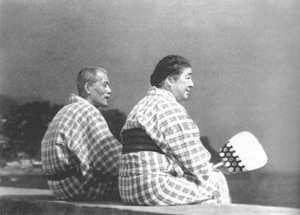In the late 1970s, the Khmer Rouge ruled Cambodia with an iron fist and may have been responsible for the deaths of a million civilians, many of whom underwent interrogation and torture in makeshift detention centers like the S21 in Phnom Penh. Very few of the 17,000 men, women, and children who were imprisoned at S21 survived, but filmmaker Rithy Panh has found two of them for his remarkable new documentary, S21: The Khmer Rouge Killing Machine, which shows the survivors not only returning to the scene of the crime but also sitting down to talk directly with some of the guards who conducted the brutal interrogations. The film consists of their moving, somber conversations that echo in the rooms of the dilapidated building.
Panh's subjects have such vivid recollections that he doesn't need any archival footage to recall the events that took place within these walls. One of the survivors, Chum Mey, is openly emotional about the experience, but the other, Vann Nath, seems to approach the project stoically, as if he's long since come to terms with what happened. But Nath's emotions run deep. His anger is so focused and his remembrances so gently articulate that he makes a perfect centerpiece for the film.
Nath is a painter, and his paintings tell more about what he saw than any amount of raw footage would. At the prison he pores over written reports of interrogations, picks through rubble, and talks with the former guards, conducting interviews that are far more civil than the interviews the guards conducted themselves in the 1970s. In one of the movie's central images, Nath stands with the men in front of one of his paintings, a large prison scene. As he describes the work and his experiences, the men listen quietly, but their postures are telling. They hang back and lean against the wall, attentive, but not fully engaged, which is how they seem to approach the entire project.
When Nath tries to understand how these men could have participated in such brutality, they provide a number of rationalizations. They were given orders, indoctrinated from early childhood by the army. Some of them were assigned to work at the prison when they were only 13 years old. Nath doesn't seem to forgive them, but the movie doesn't simplify their situation. They were young, they were indoctrinated, and the movie encourages us to wonder if they should be counted among the victims.
Even though it's much shorter, S21 is bound to draw comparisons to Shoah, Claude Lanzmann's landmark documentary about the Holocaust. S21 approaches its subject with the same austerity and shows the same reverence for personal memories by plunging the viewer into them without a lot of historical setup. But at times, S21 could benefit from more context, not about the political forces that led to these atrocities — which are outside of the movie's scope, just as Hitler's troop movements are outside the scope of Shoah — but about how the project came to be. Why are the former guards participating? In one of the movie's most chilling scenes, one of the guards, who was so young in 1977 that he's barely middle-aged now, reenacts his tasks at the prison. He falls into his old routine with such unsettling gusto that one wonders why he's going through this demonstration, but Panh leaves the explanation out. While the reenactment is a useful window into the past, it encourages an ill-informed judgment against this man based on how he acts today rather than what he did then. As in the scene where the men look at Nath's painting, it's hard to tell whether the behavior on display is natural or a response to offscreen prompting from the director.
The movie succeeds despite its ellipses because it's not focused on confronting the men, Mike Wallace-style, but instead on resurrecting the memories of the victims, who Nath and Mey represent, and somehow finding peace and closure by doing so. The final shot lingers on one of the building's empty rooms, a strong wind gusting outside. With the doors and windows long gone, the wind blows into the room and stirs up the dust, specters rising and howling, translucent evidence of people not forgotten.


